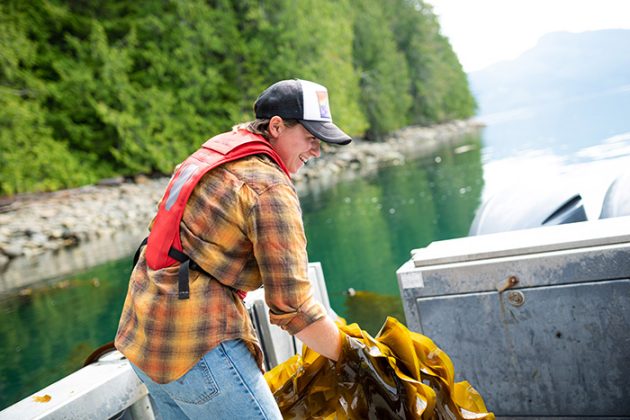
Future-proofing seafood production on the West Coast
April 12, 2022
By
Maryam Farag

Photo: North Island College.
North Island College (NIC) is launching four research projects, focused on future-proofing seafood production with B.C. coastal communities.
The projects are powered by $678,656 in grant funding, made available through the Tri-agency College and Community Innovation program, managed by the Natural Sciences and Engineering Research Council of Canada (NSERC), in collaboration with the Canadian Institutes of Health Research and the Social Sciences and Humanities Research Council.
“We’re incredibly grateful to NSERC for this funding that will allow us to expand our research projects along the B.C. Coast, support our community partners and provide increased opportunities for NIC students to get hands-on research experience,” said Naomi Tabata, Manager, College’s Centre for Applied Research, Technology and Innovation (CARTI).
The funding will support the creation of 18 student research positions. The students will take part in all aspects of the research projects, including field research, data collection and reporting.
Two of the projects are continuations of previous CARTI research partnerships. The next phase in the oyster grow-out system project will work with a local oyster grower to further develop and test a new system that early testing has resulted in increased growth and reduced stress of juvenile oysters.
Researchers will also be working with the Kwiakah First Nation on the next phase of their kelp research project, assessing different growth configurations of kelp to ensure kelp production supports the natural ecosystem and ocean habitat.
The funding will also be used for two new research projects. The microplastic research will look at how plastic equipment and gear used in shellfish farms deteriorates and how to mitigate its impact on the environment and shellfish. NIC researchers and students will quantify the plastic degradation in the lab and will also work on site with a local oyster grower in Baynes Sound for the first phase of this research.
The final project will involve the assessment of ocean sensors which help monitor changing ocean conditions. Researchers will compare established sensors with new, low-cost sensors to determine their effectiveness and usefulness for the seafood and other industries on the coast.





